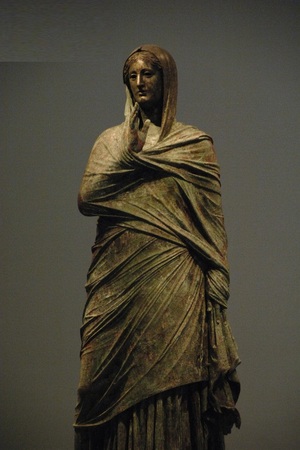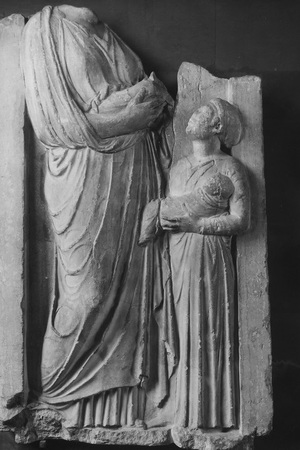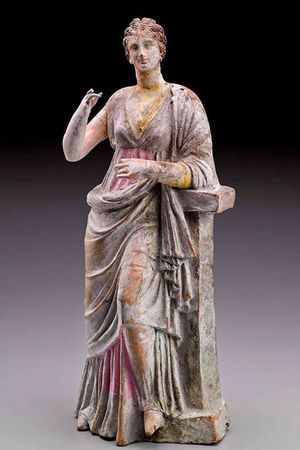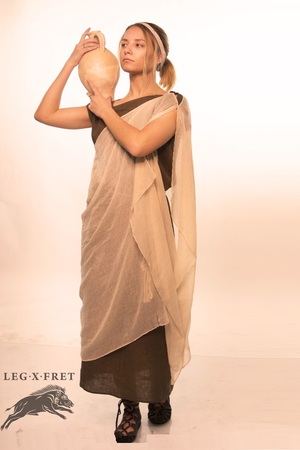Women in Ancient Greece
The social status of women in Ancient Greece was roughly the same across most Greek city-states and was significantly lower than that of men. Today, historians gather information about women's lives from various tragedies, comedies, and rhetorical works of antiquity, as well as from archaeological finds such as epigraphs, bas-reliefs, and pottery.
Women in Greece were limited in their rights and faced severe public condemnation if they tried to interfere in areas of life that were inaccessible to them. At the same time, these strict limitations were combined with some advanced rights, such as the ability to divorce their husband in case of his infidelity and to reclaim their dowry, which was not possible in many states during the ancient period.
Many philosophers debated the status of women in ancient Greek society. For instance, Aristotle claimed that women were biologically inferior to men, while Plato believed that women were biologically equal to men. The status of women in Greece combined strict limitations with progressive rights and freedoms.
 Greek Bas-Relief. School of Praxiteles. Mantineia, Greece. 4th century BCE.
Greek Bas-Relief. School of Praxiteles. Mantineia, Greece. 4th century BCE.
Women's clothing
Women's costumes varied little from one city-state to another, except in Sparta, where women wore only a light chiton due to the peculiarities of their social system and activities.
In ancient Hellas, women's clothing was more modest, although in earlier times fashion favored exposed or nearly bare breasts.
At home, women could wear only a light pleated chiton. To go outside, Greek women wore a himation over the chiton, which was not much different from the men's version. There was a single fashion for the shape of the women's himation throughout Greece, except in Sparta.
There are two types of women's chitons. Narrower ones were called Ionic, while wider ones that could cover the head were called Doric. The characteristic sleeveless blouse form of the women's chiton was achieved by folding the top edge of the chiton, called a diplodion. The himation was tied at the hips with a special belt, giving it the classic Greek look. Footwear for Greek women included either sandals or a type of half-boot for cold weather. The shoes were made from calf or pigskin. It was fashionable for a long time to lace the shoes with thin cords. The soles were usually flat without heels.
Women wore special bands on their chests, called strophium in Rome. These served the function of a bra and prevented the breasts from growing too large, as small breasts were considered the ideal of beauty in ancient Greece. Some women, especially hetaeras, wrapped their bodies with special ribbons to hide excess volume, and according to some sources, to conceal early pregnancy.
Clothing of Ancient Greek Women:
Jewelry:
Related topics
Ancient Greece, Chiton, Fabrics in Antiquity, Women in Ancient Rome, Samnite women
Literature
- Pomeroy, Sarah B. «Goddesses, whores, wives and slaves: women in classical Antiquity». ISBN 0-7126-6054-2
- Dillon, Mathew. «Girls and women in classical Greek religion». ISBN 0-415-20272-8
- Winkler, John. «The constraints of desire: The anthropology of sex and gender in ancient Greece». ISBN 0-415-90122-7
- Plato. "State". ISBN 978-5-17-098343-8






